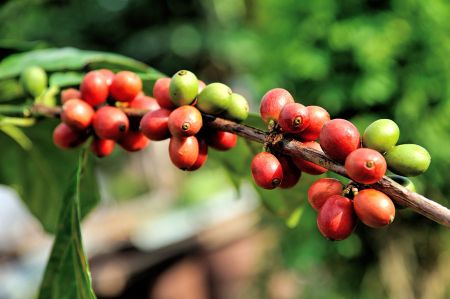Arabica coffee - Economically of great relevance
Arabica coffee, also known as mountain coffee, is the economically most important type of coffee. Coffea arabica is said to originally come from southwestern Ethiopia.
One of the stories about the first human encounter with the plants of Coffea arabica is as follows: A shepherd in the kingdom of Kaffa had observed that one of his goats had eaten leaves and seeds from a plant several times and then simply could not sleep and large internal ones showed unrest.
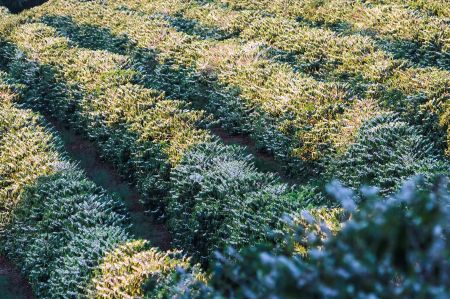 After his account of the goat's behavior towards some monks, some of them tried eating the leaves themselves to prolong their vigils. Initially, however, only the leaves were used to brew tea, as is still common in large parts of Ethiopia.
After his account of the goat's behavior towards some monks, some of them tried eating the leaves themselves to prolong their vigils. Initially, however, only the leaves were used to brew tea, as is still common in large parts of Ethiopia.
This is how humans began to use the coffee plant as food and drink. Perhaps the use of the plant as a food is also much older. The use of coffee beans in today's form for daily coffee is much younger, because people can only enjoy the coffee beans in roasted and ground form, otherwise they are harmful to health. The grinding and roasting of coffee was only carried out much later and probably for the first time in Yemen.
The main growing areas of Arabica coffee are in Brazil
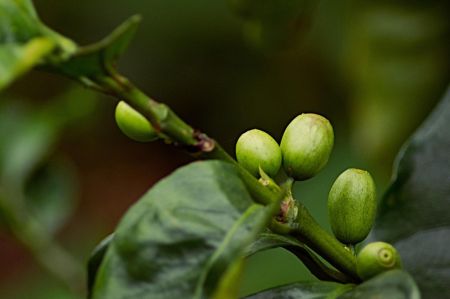 In any case, the spread of the product, then known as "Arabian coffee", via Egypt and the Turks is proven by various traditions. Coffea arabica grows in shrub form and can reach up to 5 meters in height. After flowering, the evergreen plant shows the so-called "coffee cherries", which usually appear bright red when ripe. The drupe "coffee cherry" usually has two or three chambers. Inside the chambers are the seeds, which we commonly refer to as coffee beans.
In any case, the spread of the product, then known as "Arabian coffee", via Egypt and the Turks is proven by various traditions. Coffea arabica grows in shrub form and can reach up to 5 meters in height. After flowering, the evergreen plant shows the so-called "coffee cherries", which usually appear bright red when ripe. The drupe "coffee cherry" usually has two or three chambers. Inside the chambers are the seeds, which we commonly refer to as coffee beans.
Arabica coffee is often also referred to as mountain coffee and is now grown in some regions of the world, including on the Indonesian island of Java, where it is then referred to as "Java bean". However, the main growing areas are in Brazil. The first public publication of coffee dates back to 1753 by Carl von Linné in Species Plantarum, who published an article on Coffea arabica.
Coffee export important trade factor
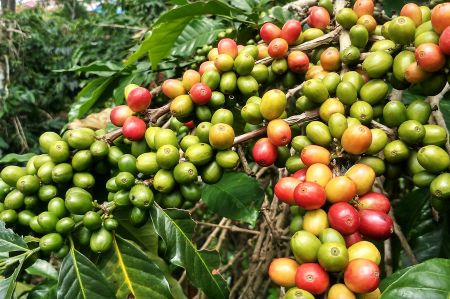 Since the coffee beans of the conventional Coffea arabica contain up to 12 milligrams of caffeine per gram dry weight, people tried for years to decaffeinate the coffee by machine. Everyone is certainly familiar with such products from advertising. Through special selection, Brazilian biologists have succeeded in finding and breeding Ethiopian coffee plants that contain significantly less caffeine. Only 0.82 milligrams are still contained in these varieties and so chemical processes for decaffeination can probably be omitted in the future.
Since the coffee beans of the conventional Coffea arabica contain up to 12 milligrams of caffeine per gram dry weight, people tried for years to decaffeinate the coffee by machine. Everyone is certainly familiar with such products from advertising. Through special selection, Brazilian biologists have succeeded in finding and breeding Ethiopian coffee plants that contain significantly less caffeine. Only 0.82 milligrams are still contained in these varieties and so chemical processes for decaffeination can probably be omitted in the future.
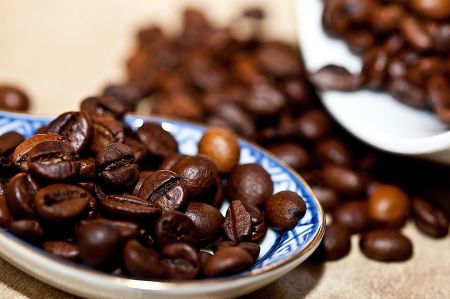 Coffee is the most popular drink today, ahead of tea. The Arabica coffee variety is considered to be the highest quality coffee variety and is accordingly cultivated in small plantations in many tropical countries. The somewhat faster-growing variety Robusta has a less noble taste, but also has significantly less caffeine content. The main buyers are predominantly the countries in the temperate zones, above all Europe. For many producing countries, coffee is such a high-quality commercial product that coffee exports play an important role in their own economy.
Coffee is the most popular drink today, ahead of tea. The Arabica coffee variety is considered to be the highest quality coffee variety and is accordingly cultivated in small plantations in many tropical countries. The somewhat faster-growing variety Robusta has a less noble taste, but also has significantly less caffeine content. The main buyers are predominantly the countries in the temperate zones, above all Europe. For many producing countries, coffee is such a high-quality commercial product that coffee exports play an important role in their own economy.
Please read as well:
Walser costume - explanations of the tradition in Mittelberg
